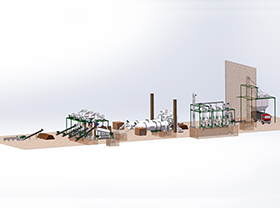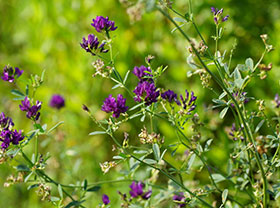
Hotline:+86 18574103366
| |
Model:MZLH
Capacity:0.3 t/h-20 t/h
Applicable: Hops Pellet Maker Plant
Hops are used primarily as a bittering, flavouring, and stability agent in beer, to which, in addition to bitterness, they impart floral, fruity, or citrus flavours and aromas. Therefore, what we see most is the use of hops in beer. Hop pelletizing equipment is indispensable for producing hop pellets, that is, hops pellet maker.
Hops pellet maker is base on hops as the main raw materials to making the biomass pellets. Also the pellet machine maker can pellet other materials into pellets, like corn stalk,wheat straw,rice straw,sawdust and so on after they are grinding. With the development of biomass pellet production, more and more Hops are available as raw materials for biomass pellet making. The hops pellet making machine is also more popular in biomass pellet production. Materials such as hops, hemp and straw are lighter, Richi Machinery new design industrial use hops pellet maker have added a forced feeding device to improve granulation efficiency and capacity.
Hops are divided into two very general varieties: bittering and aroma. Bittering hops will have higher alpha acids, making them more economical for bittering beer (a small amount goes a long way). Aroma hops will tend to have more essential oils. It’s those highly volatile essential oils that contribute much of what people understand as “hoppiness.” We’re talking aromas like citrus, pine, mango, resin, melon, and more. By adding hops early in the brewing process, all of those essential oils volatize (boil away), either during the boil or during fermentation. That’s why adding them later in the brewing process tends to make a beer smell “hoppier.” Also, that volatility is the same reason why the aroma and flavor of heavily hopped beers don’t stand up as well to time. Much of the hop-forward aromas and flavors will dissipate, leaving quite a different beer than the brewer intended.
| Model | MZLH320 | MZLH350 | MZLH420 | MZLH520 | MZLH768 | MZLH858 |
| Anti-caking Feeder Power | 1.5KW | 1.5KW | 1.5KW | 2.2KW | 3KW | 3KW |
| Forced Feeder Power | 0.55KW | 0.55KW | 0.55KW | 0.75KW | 1KW | 1KW |
| Capacity | 600-800kg/h | 800-1000kg/h | 1.5-2t/h | 3-4 t/h | 5-7 t/h | 8-10t/h |
| Pellet Machine Power | 37kw | 55kw | 90kw | 110/132kw | 250/280kw | 280kw |
| Final Pellet | 1-12mm | 1-12mm | 1-12mm | 1-12mm | 1-12mm | 1-12mm |
| No. | Continent | Country |
| 1 | Europe | Germany, Britain, Russia, Ukraine, Netherlands, Belgium, Slovenia, Bosnia and Herzegovina, Poland, Lithuania, Moldova, Romania, Spain, Albania, Slovakia, Czech Republic, Austria |
| 2 | America | United States, Mexico, Colombia, Canada, Chile, Bolivia, Ecuador, Trinidad and Tobago, Dominica, Bahamas, Puerto Rico, Honduras, El Salvador, Panama, Peru, Brazil, Argentina, Jamaica |
| 3 | Asia | Uzbekistan, Russia, Kazakhstan, China, Vietnam, Cambodia, Myanmar, Thailand, Malaysia, Canada, Indonesia, Philippines, Sri Lanka, Bangladesh, Nepal, Oman, Cyprus, Syria, Lebanon, Palestine, Pakistan, Israel, Iraq , Saudi Arabia, Yemen, UAE, Qatar, Afghanistan, Georgia, Bahrain |
| 4 | Africa | Algeria, Ethiopia, Kenya, Tanzania, Nigeria, Zimbabwe, Botswana, South Africa, Comoros, Malawi, Mozambique, Sudan, Tunisia, Libya, South Sudan, Somalia, Rwanda, Uganda, Mauritania, Senegal, Gambia, Guinea , Cape Verde, Sierra Leone, Ghana, Benin, Côte d’Ivoire, Burkina Faso, Madagascar, Cameroon, Equatorial Guinea, Congo (DRC), Zambia, Angola |
| 5 | Oceania | Australia, Papua New Guinea, New Zealand |
Solution

2-2.5 T/H Biomass Wood Pellet Production Line

4-5 T/H Biomass Wood Pellet Production Line

8-10 T/H Biomass Wood Pellet Production Line

24-30 T/H Biomass Wood Pellet Production Line

Wood Pellet Plant Production Line

Biomass Pellet Plant Production Line

Alfalfa Pellet Plant Production Line

Organic Fertilizer Pellet Plant Production Line